10 AI Customer Service Trends Businesses Must Know In 2025

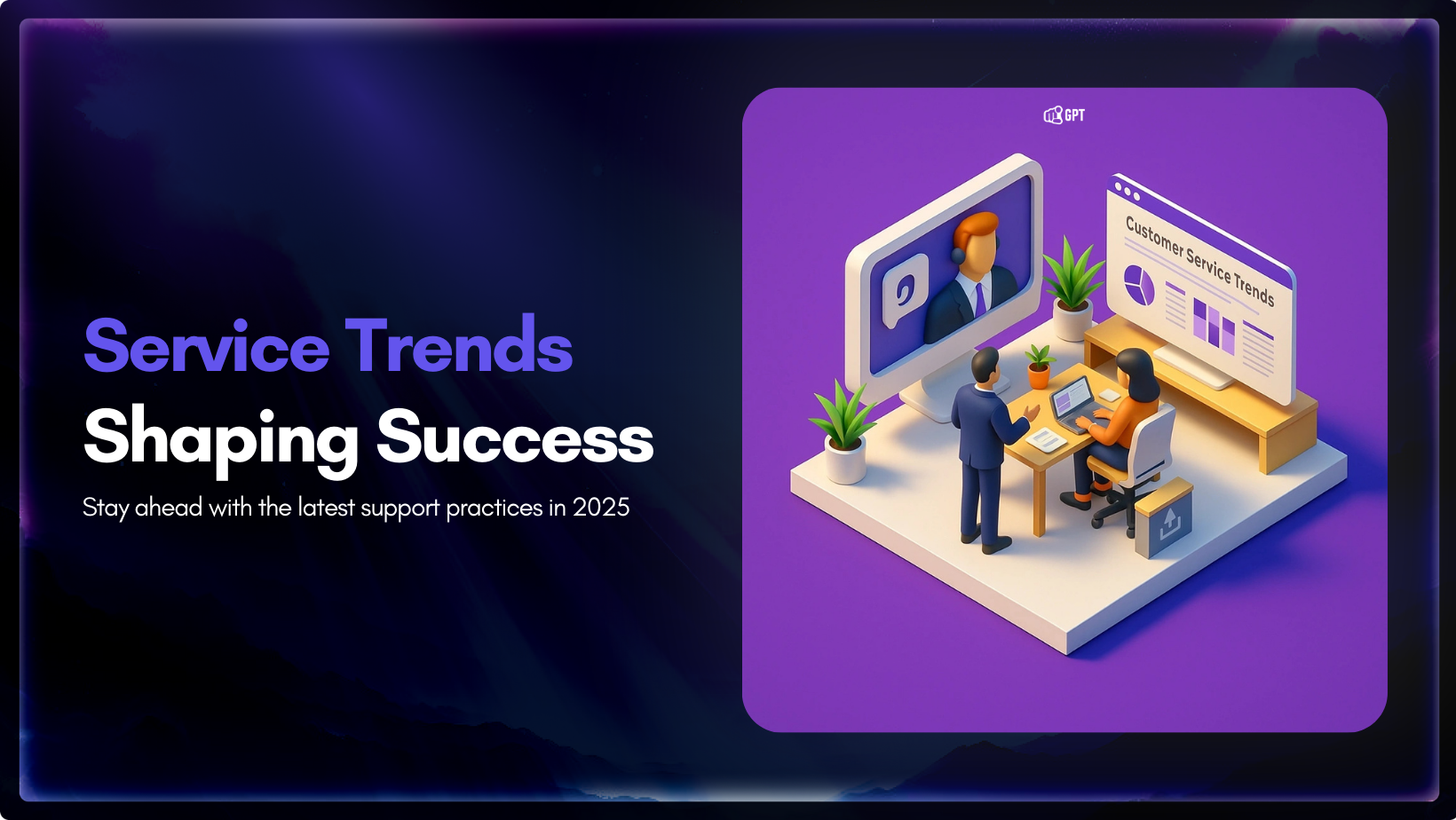
Customer service has shifted from a support role to a central driver of business growth. Zendesk reports that more than 70 percent of CX leaders plan to integrate generative AI into customer touchpoints within the next two years.
AI-powered agents are already managing real conversations, while copilots help human agents resolve queries faster. Omnichannel platforms reduce repeated explanations, and self-service is becoming a standard expectation. Based on our recent blog on AI Customer Service Statistics 2025 report, self-service resolves 54 percent of issues end-to-end, showing why companies now treat it as a foundation of modern support.
This blog covers ten essential AI customer service trends for 2025. Each section explains what is changing, how leading companies are responding, and the steps you can take to deliver experiences that build loyalty and support growth.
Customer service in 2025 is smarter, faster, and more personal. Here’s a quick summary of the top trends shaping the future of support:
Look for platforms that balance automation with empathy. YourGPT brings AI agents, copilots, omnichannel support, and seamless human handoff together in one system.
Customer service trends show an emerging pattern, how customer expectations and support technology are changing. Trends help businesses make decisions about training support teams using the right technology like customer service AI agents, Support Chatbots automating common tasks and choosing the right communication channels like WhatsApp Slack or email. By following trends closely companies can see what customers want next and improve their service proactively.
Customer service expert Shep Hyken explains trends clearly:
“Customer service is not a department it is a philosophy.”
Trends show businesses how to use technology to put that philosophy into action. For example with YourGPT users 87 percent of customer queries get solved automatically using AI agents.
In everyday business terms following customer service trends means giving customers what they actually want. It means answering questions faster solving problems without delay and using tools like AI chatbots that make support easier for customers and staff.
Companies that do this reduce support costs, improve customer experience satisfaction and keep people coming back. Instead of just using new technology because it is available successful businesses pick tools that clearly improve the customer experience.
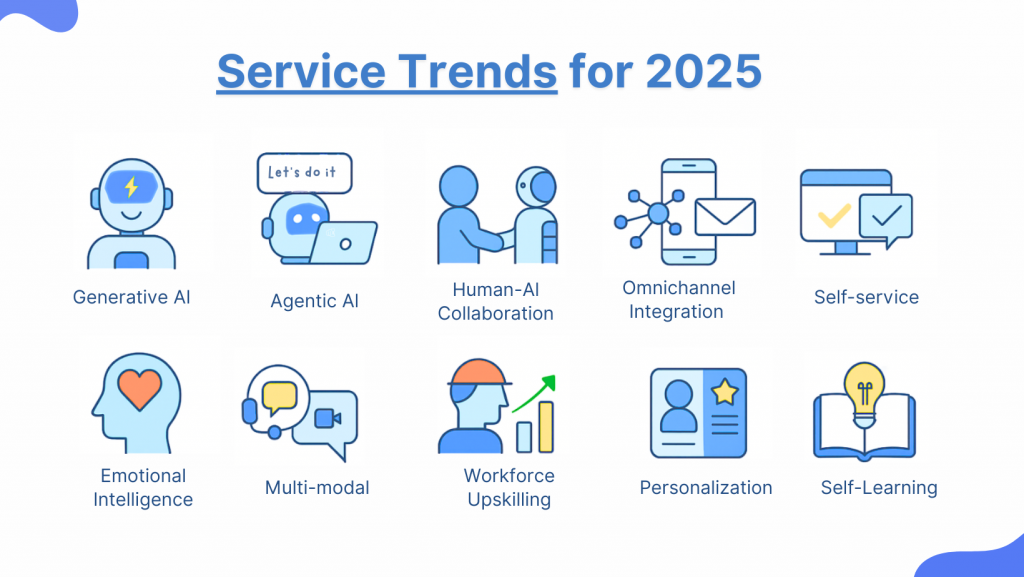
Customer service in 2025 is faster, smarter, and more personal than ever before. With AI advancing rapidly and customers expecting instant, connected experiences, businesses are rethinking how they deliver support. What was once considered cutting-edge has now become the baseline.
Here are the ten customer service trends defining 2025, along with how forward-thinking businesses are applying them to stay competitive.
Generative AI is the backbone of frontline support. AI agents can draft natural replies, summarize complex cases, and adapt tone to the customer’s mood. This allows businesses to respond instantly while keeping conversations human-like and context-aware.
Examples in action:
Smart businesses train these models on their own data, so answers are accurate and brand-specific. By blending generative AI with human oversight, companies cut resolution times without sacrificing quality.
Agentic AI has matured into a problem-solver. It does more than answer questions. It carries out end-to-end workflows. Refunds, subscription changes, appointment scheduling, and policy-driven tasks can all be resolved automatically.
With tools such as YourGPT AI Copilot Builder, companies are building AI copilots that not only respond but can perform multistep actions in realtime.
This shift frees human agents to handle cases where empathy, judgment, or negotiation are required.
AI will not replace human agents in 2025. Instead, it supports them as copilots. The best service models combine AI’s speed with human empathy.
AI copilots draft replies, suggest relevant knowledge base articles, and summarize long conversations. Agents then personalize and finalize the interaction. This collaboration reduces handling time while still maintaining warmth.
Examples in action:
Collaboration ensures that neither automation nor empathy is lost.
Customers no longer think about communication channels separately. They expect to move smoothly from Instagram to email or from live chat to a phone call without needing to repeat themselves. Losing context between these interactions creates frustration.
In 2025 companies solve this by adopting unified platforms that preserve customer context through Model Context Protocol (MCP). MCP ensures context follows customers seamlessly across every interaction.
Examples in action:
The takeaway is clear: being omnichannel is not about being everywhere. It means making every interaction connected, smooth, and frustration-free.
Today most customers prefer to solve issues themselves first rather than reaching out to support. By 2025 self-service will have become the first and most trusted option. Customers expect help centers, AI chatbots, and guides that match the effectiveness of speaking directly with an agent.
What this looks like in practice:
Smart businesses regularly update self-service content based on common customer questions. The result is fewer support tickets, lower costs, and higher customer satisfaction.
Automation by itself isn’t enough to earn customer loyalty. People remember interactions based on how they felt—not just what got solved. Genuine empathy still matters.
At the same time, AI that’s built specifically for your industry delivers better answers. It understands the context, language, and unique challenges your customers face.
How emotional intelligence and specialized AI work together in real life:
When businesses pair human empathy with focused, specialized AI, customers get support that feels personal, trustworthy, and truly helpful.
In 2025 customer support includes more than written messages. Customers are starting to use voice images or even videos to clearly show their issues. AI can already understand and respond to voice or visual content but processing these different types of data takes significant resources. Because of this multimodal AI is possible but currently not easy to scale.
What multimodal support looks like practically:
Multimodal communication offers customers more natural ways to interact. As technology improves this approach will become more practical scalable and widely adopted.
Traditional training can’t keep up anymore. Customer service tools and AI systems change too fast now, often every few weeks. Teams need to learn continually rather than taking occasional courses.
How companies keep their agents updated:
Ongoing learning doesn’t just help teams perform better. It makes agents feel more confident in their jobs, happier at work, and less likely to leave.
Customers now assume businesses understand who they are and what they want. They don’t want to start from zero every time they talk to support.
Real-world personalization in customer support:
When support feels personal customers trust businesses more and come back more often.
In 2025 the most effective customer support doesn’t rely on fixed AI. Instead support systems continuously learn and improve by analyzing real customer interactions.
What self-learning support looks like in practice:
Self-learning AI means your support team spends less time manually updating systems. Instead your support grows smarter by itself keeping pace with customer needs.
Customer service in 2025 is shaped by two forces working together: AI systems that handle routine tasks with speed and accuracy, and people who bring empathy and judgement where it matters most. Generative AI, AI copilots, and omnichannel tools are no longer experiments — they are now part of daily operations. Self-service has become the first step for many customers, while voice and visual interactions keep support human when complexity or reassurance is needed.
The organisations that will stay ahead are those that treat service as a relationship, not a transaction. Transparency, trust, and proactive care now carry as much weight as fast responses.
YourGPT helps you bring these practices into action. With AI agents that adapt to your business data, copilots that autonomous handle tasks for you, which usually requries human teams, and simple handoff when human support is required, YourGPT enables companies to deliver service that feels both reliable and personal. Businesses adopting this approach today are not just keeping up with trends — they are defining what excellent service means in 2025.
Use YourGPT to cut response time keep conversations consistent across channels and hand off to human agents when needed. Try it today and see the difference in your support.
7 day free access • No credit card required • Works in multiple channel
AI has become a core part of how modern SaaS products are built and delivered. In 2026, customers expect intelligent assistance to be available throughout their journey, from onboarding and everyday product usage to support and account management. Inside SaaS teams, AI is increasingly used to speed up workflows, reduce repetitive tasks, and improve how […]

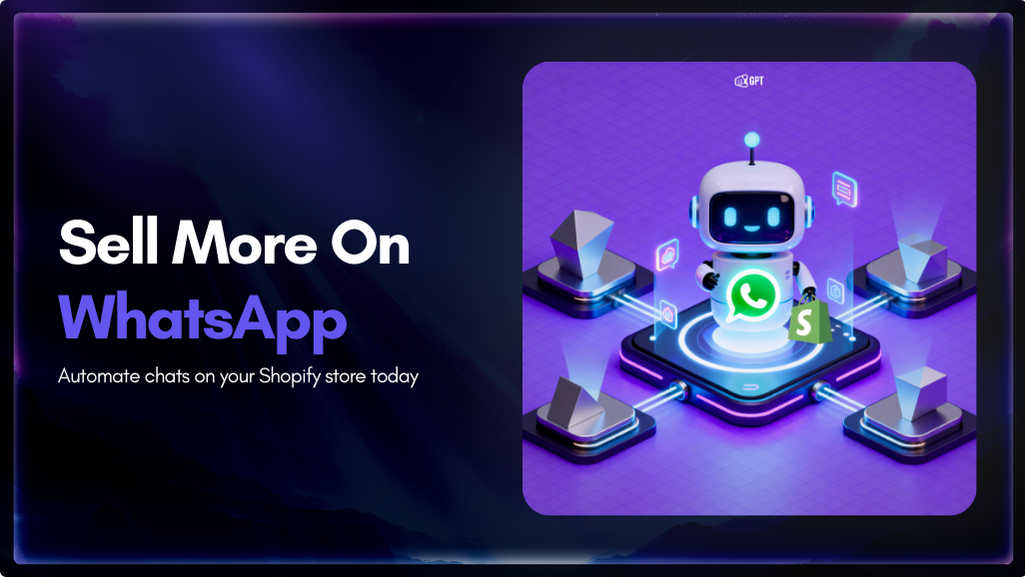
Shopify stores often use a chatbot on their website to handle product questions, order updates, and support. But customers also message on WhatsApp expecting the same quick answers. Most of them already use WhatsApp throughout the day, so reaching out there feels natural. A chatbot that works across both channels responds in seconds, guides purchase […]

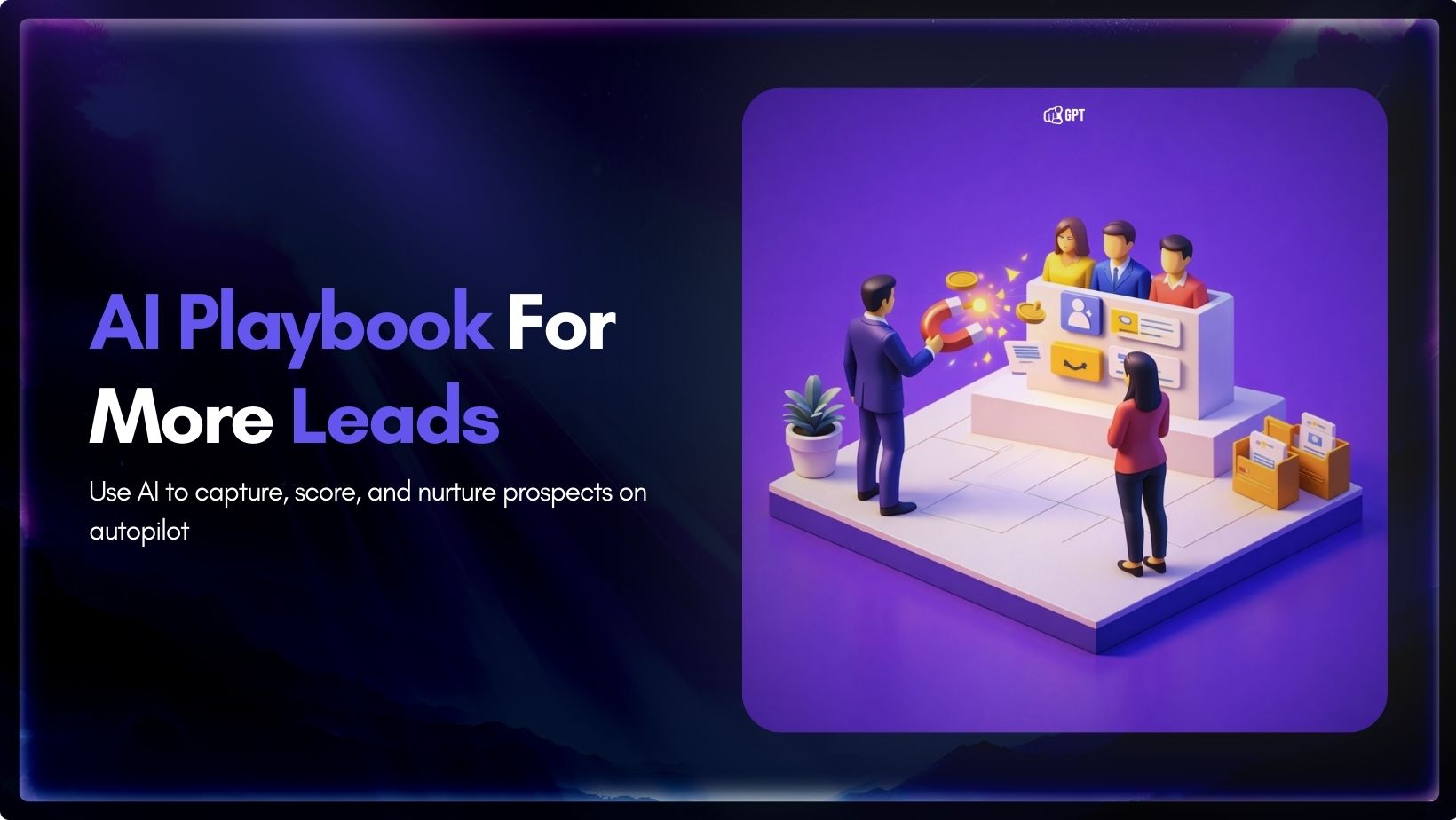
Most businesses do not struggle to generate leads. They struggle to know which ones are worth acting on. Forms get filled, DMs arrive, emails are opened, and chats happen across multiple tools. Some prospects convert. Most do not. The real problem is that there is no reliable way to tell, early enough, which signals actually […]

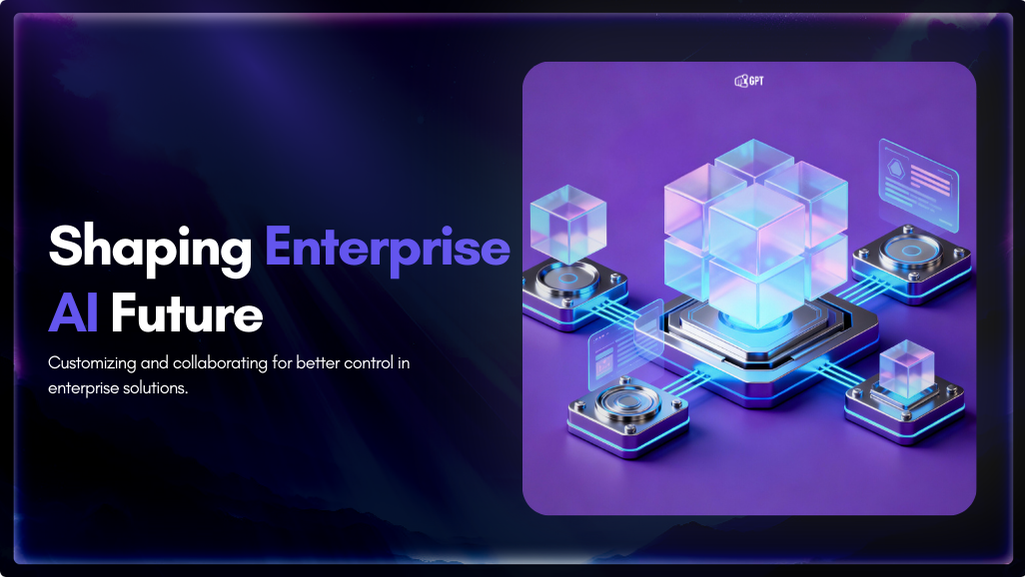
Artificial Intelligence has advanced quickly over the past five years, moving from an experiment to a standard component of modern business. AI has become a central part of enterprise strategy. 88% of organizations are now using AI. This figure has increased from 78% the year before. This transformation is reshaping how companies run, communicate, and […]

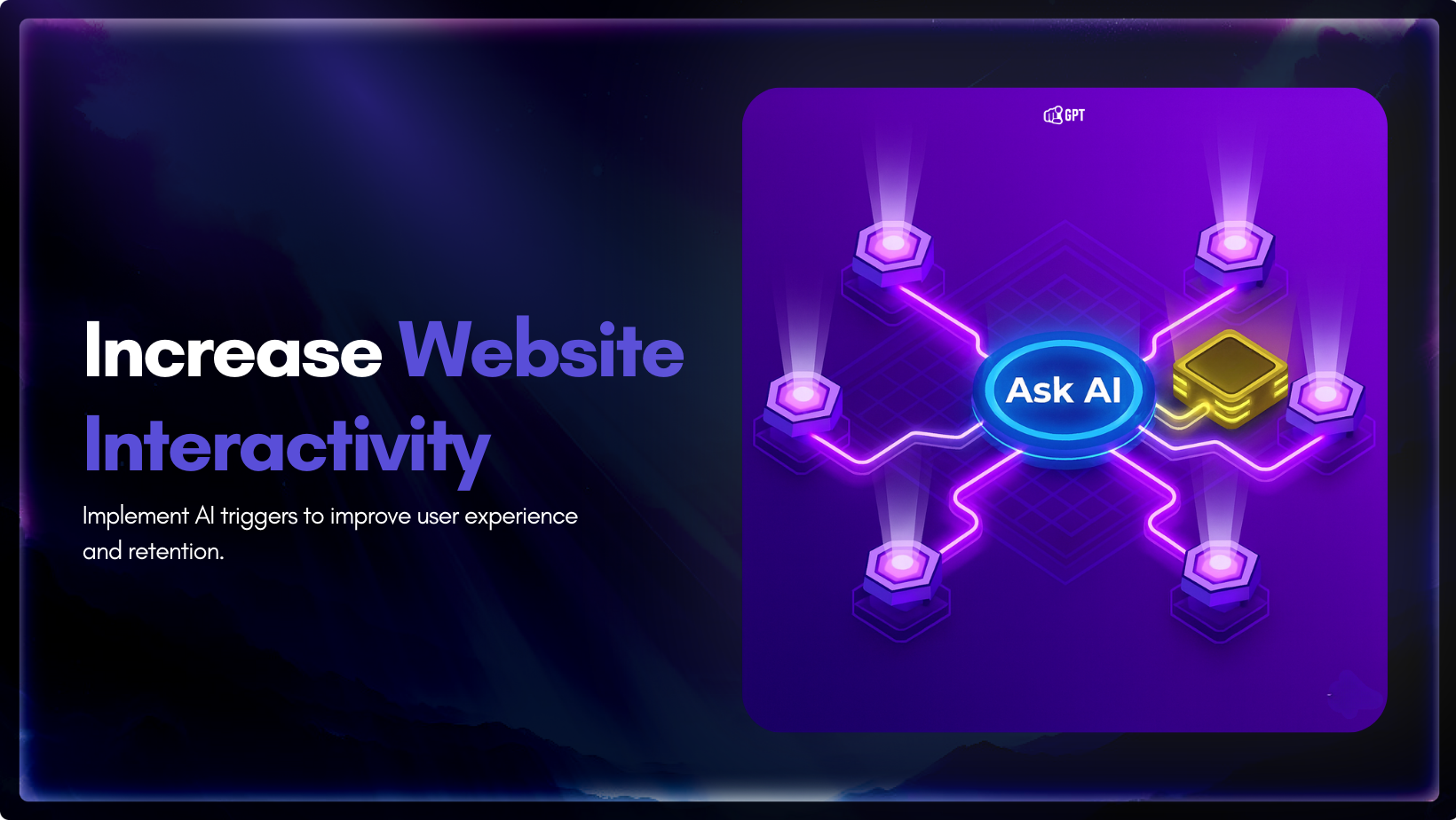
You invest time writing your website copy. You explain features, pricing, and how everything works. The information is there. Still, some visitors leave without clarity, and small gaps in understanding often stop them from moving forward. This happens because a static page cannot adjust to what they want at that moment. They skim a section, […]

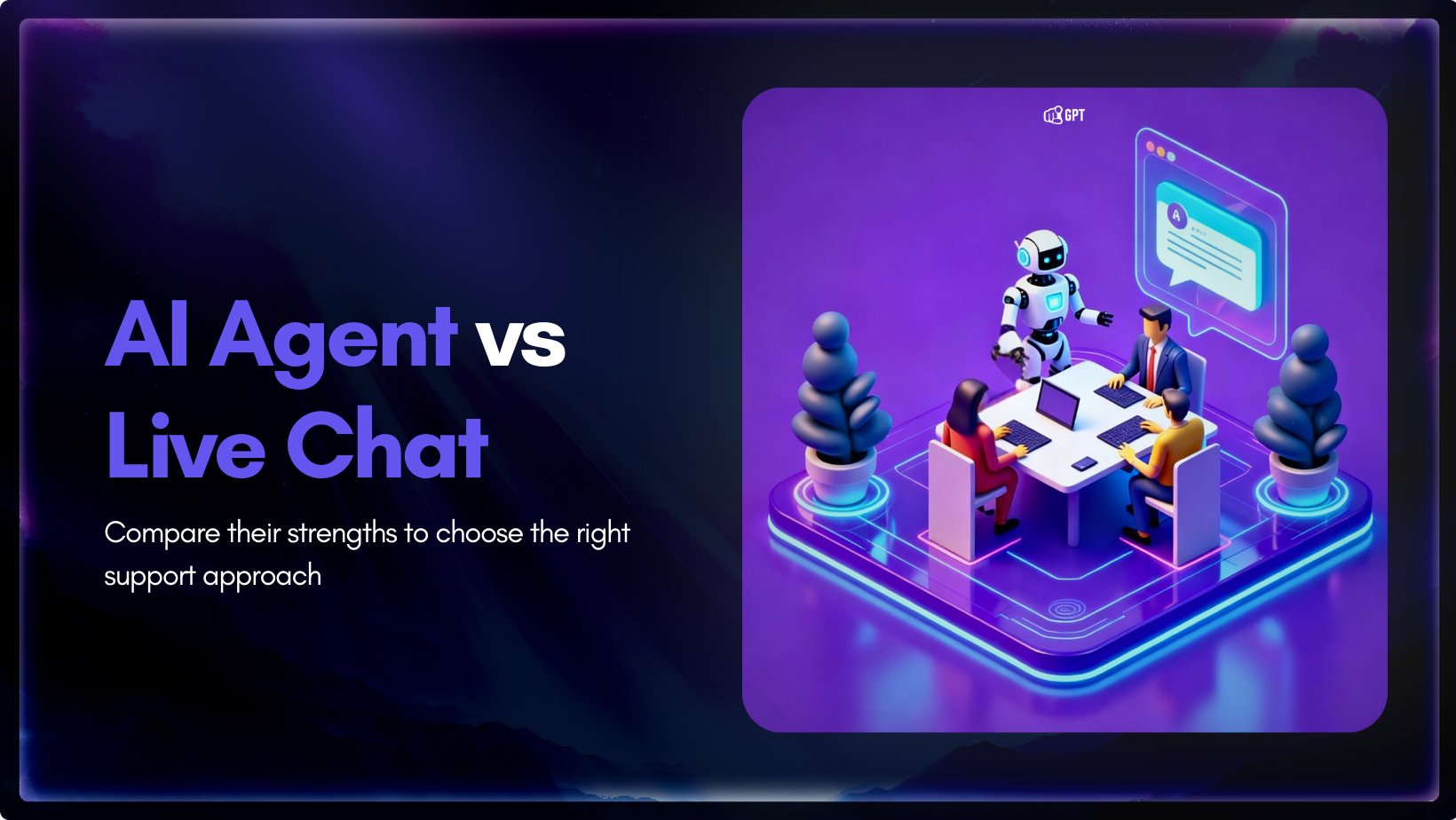
AI agent and live chat each play a different role in customer support, and the choice between them influences how a team handles growth. Companies are moving toward faster support models, and one clear trend is the use of AI to reduce operating costs by up to 30%. The difference shows up when ticket volume […]
